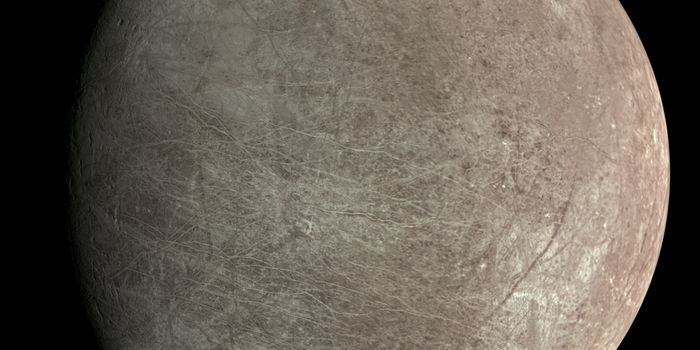Videos
Goshawk Flies Through Tiny Spaces in Slo-Mo!
MAY 26, 2014 12:00 AM PDT
Share
Supernovas Create Earth
 In order to understand the star that produced a supernova that was discovered last year, researchers at the Weizmann Institute of Science in Rehovot, Israel, identified the mix of elements that was thrown off right before the explosion of the giant star began. Prof. Avishay Gal-Yam of the department of particle physics and astrophysics explained that the star can be identified by the proportion elements including carbon, oxygen and nitrogen detected in the material ejected into space. These elements are created in the nuclear fusion that powers some of the stars. Whereas in our own sun, hydrogen, the lightest atom, fuses to make helium and stops there, but in some stars, the fusion continues to form heavier elements, all the way up to iron.
In order to understand the star that produced a supernova that was discovered last year, researchers at the Weizmann Institute of Science in Rehovot, Israel, identified the mix of elements that was thrown off right before the explosion of the giant star began. Prof. Avishay Gal-Yam of the department of particle physics and astrophysics explained that the star can be identified by the proportion elements including carbon, oxygen and nitrogen detected in the material ejected into space. These elements are created in the nuclear fusion that powers some of the stars. Whereas in our own sun, hydrogen, the lightest atom, fuses to make helium and stops there, but in some stars, the fusion continues to form heavier elements, all the way up to iron. Scientists think that such stars are layered like onions with the heaviest elements in the core and the lighter ones in the outside layers. At the outermost edges are stellar winds that blow the material out to space. In stars like the one that exploded last year, the wind is so forceful that it can throw off a mass equal to that of our sun every 10,000 years. At some point the lightweight hydrogen making up the outer layer is depleted, and the star begins releasing helium, oxygen, carbon and nitrogen.
Under the surface is a layer where hydrogen, helium and the heavier elements all meet. It must be high enough to hold hydrogen but hot enough to produce the extreme temperatures needed for nuclear fusion. Scientists are particularly interested in this layer, because it is where nitrogen is formed. Unlike carbon, with six protons (three fused helium atoms), or oxygen, with eight (four heliums), nitrogen has an odd number of protons - seven. This means nitrogen must be the result of fusion between even and odd atoms. Scientists believe that measuring the amount of nitrogen could reveal what lies underneath the skin of such stars.
While the wind keeps sweeping away the star's outer layers, the star's core continues to amass iron until it becomes so heavy that it is no longer stable. At that point, the core collapses in a sudden, violent motion, hurling its outer layers off and producing a supernova. Detecting the elements ejected in stellar wind just before such an explosion can only be accomplished up to a day or so after the blast, because intense radiation produced by the explosion shock strips electrons from their atoms. Telescopes equipped with spectrographs aimed at the supernova can pick up the light emitted when the electrons are reunited with the atoms, but they must make their observations before the rapidly expanding debris from the explosion is swept up by the remnants of the wind, erasing this last trace of the dying star.
Last year, the race to observe the spectra of the supernova's wind began with the robotic telescopes at the Palomar Observatory in California, part of the intermediate Palomar Transient Factory (iPTF) project led by Prof. Shri Kulkarni of the California Institute of Technology (Caltech). These robotic telescopes are programmed to find transient events, such as sudden changes in the night sky that could be new supernovae, and alert team members about the sightings. When Dr. Iair Arcavi, then a doctoral student in Prof. Gal-Yam's group, received the notification, he assessed the finding, realized its significance, and contacted Dr. Assaf Horesh, then a postdoctoral fellow at Caltech, who has since joined the Weizmann team. Dr. Horesh then conducted spectroscopic observations at the Keck Observatory in Hawaii, which is farther west than Palomar and could thus extend the nighttime viewing of the supernova. Acting quickly, he managed to record the emission spectra of the material thrown to the wind 15 hours after the star exploded.
Working backward from the post-blast observations, Prof. Gal-Yam, Dr. Arcavi, Dr. Horesh and their colleagues assessed the recorded spectra and showed that the supernova indeed had a nitrogen-rich wind, similar to those of the large Wolf-Rayet stars from our galaxy. This is the first time, says Prof. Gal-Yam, that this feat has been accomplished. The findings appeared in Nature online on May 21, 2014, and in the magazine's May 22 issue.
Now that the team has shown that the combination of efficient global organization and mobilization of telescopes around the world can work to capture such fleeting events, they hope that further sightings of infant supernova explosions will be possible. Understanding how these stars live and die is important, Prof. Gal-Yam says, and not just because it gives us a window on the workings of the universe: "All the heavier elements in the universe - those with a mass larger than that of helium - are created in the fusion furnaces of large stars and dispersed through supernova explosions. So many questions - about the origins and the relative abundance of different elements - go back to these processes taking place throughout the cosmos."
You May Also Like
Loading Comments...








